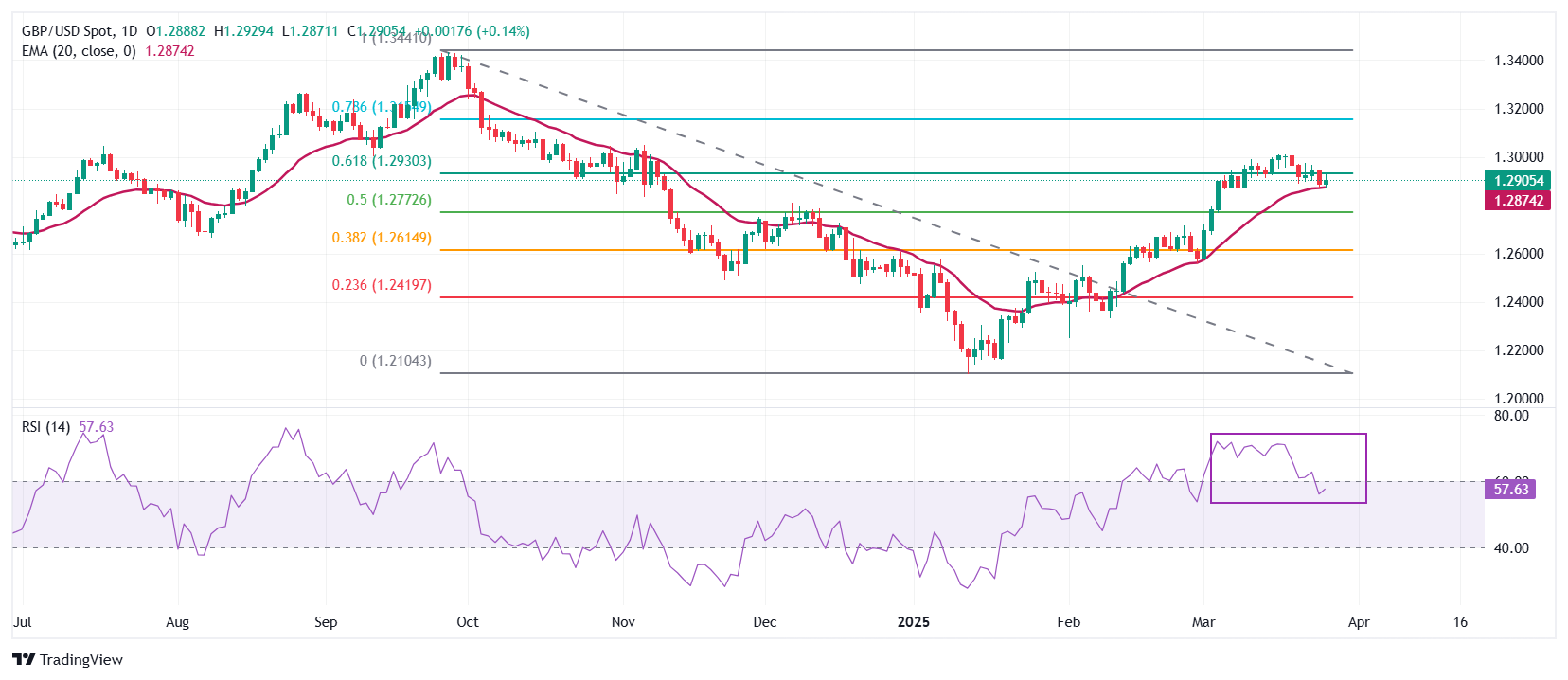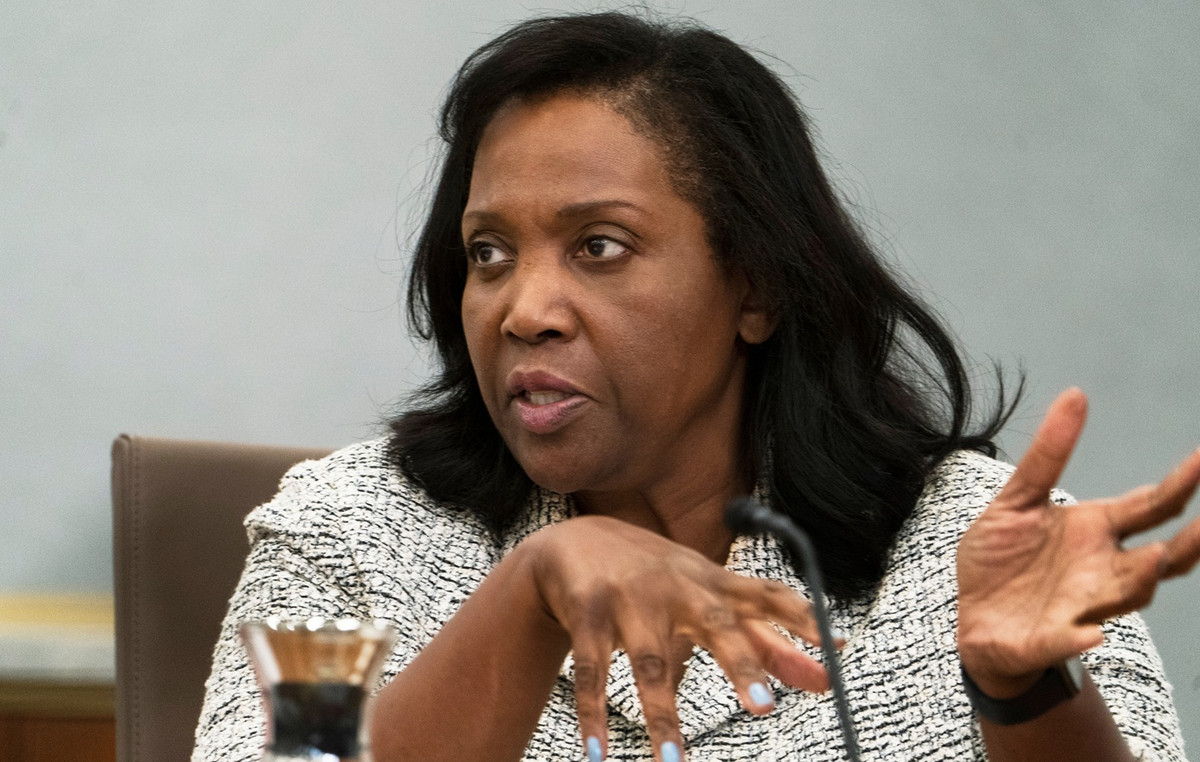- The sterling pound earns about 1,2925 against the US dollar, while investors ignore the new Trump president tariffs on cars imports.
- The Fed Kashkari supports keeping interest rates at its current levels for a prolonged period.
- Reeves of the United Kingdom cuts social benefits and remains committed to its fiscal agenda.
The sterling pound (GBP) is strongly recovered about 1,2925 against the US dollar (USD) during the European negotiation hours on Thursday. The GBP/USD pair bounces after a slight corrective movement in the last five days of negotiation from four months of around 1.3000. The cable bounces while the US dollar goes back, despite the fact that the president of the United States, Donald Trump, has imposed 25% tariffs on all imports of cars and their components.
The US dollar index (DXY), which tracks the value of the dollar against six main currencies, corrects about 104.30 from a maximum of three weeks around 104.70 previously registered in the day.
Theoretically, President Trump’s new tariffs should have decreased appetite due to the risk of investors, but market participants expect the greatest taxes to also significantly impact US economic growth. The impact of the highest tariffs will be assumed by US importers, who will transfer them to consumers. Such scenario will reduce the purchasing power of households.
In the front of the monetary policy, the president of the Federal Reserve Bank (FED) of Minneapolis, Neel Kashkari, has indicated that the Central Bank should maintain interest rates in the current range of 4.25%-4.50%. “The uncertainty of politics is complicating the work of the Fed,” Kashkari said at the Economic Summit of the Detroit Lakes Chamber of Commerce on Wednesday. Kashkari added that a possible resurgence of inflation due to Trump’s policies would increase the need for higher interest rates, while its consequences on economic growth will support a relief of monetary policy. Together, those forces are “more or less a balance,” Kashkari added.
Looking ahead, investors will focus on the data of the US Personal Consumption Expenditure Index (PCE) for February, which will be published on Friday. The impact of inflation data is expected to be limited on the perspectives of interest rates, since the fate of the Fed monetary policy is linked to the result of Trump’s economic policies.
What moves the market today: the sterling pound rises in front of its peers
- The sterling pound is listed up in front of its main peers on Thursday after recovering most of the losses of Wednesday driven by a consumer price index (CPI) of the United Kingdom softer than expected for February and a reduction in the social benefits announced by the Chancellor of the Treasury, Rachel Reeves, in the spring statement.
- The United Kingdom IPC report showed that inflationary pressures increased at a slower pace than expected due to moderate growth in clothing and footwear prices. The general CPI and the underlying IPC grew 2.8% and 3.5% year -on -year, respectively. The inflation of services, which is closely followed by the officials of the Bank of England (BOE), constantly increased 5%. Inflation in cooling is a bad omen for sterling pound, since it can boost moderate bets of the BOE.
- As promised, Foreign Minister Reeves did not announce any tax increase, reiterated that fiscal rules are unnegotible and confirmed an increase of 2.2 billion pounds in defense spending amid the uncertainty around the war in Ukraine. Reeves said he would rebuild a fiscal mattress of almost 10 billion pounds and transmitted that the amendments in social spending would save 4.8 billion pounds.
- Reeves confirmed a significant downward review in the growth rate of the Gross Domestic Product (GDP) for the year and said that the Office of Business Responsibility (OBR) has reduced 1%growth forecasts. However, the fiscal control agency raised growth forecasts for the next four years.
- Looking ahead, investors will focus on the United Kingdom’s GDP data from the fourth quarter and retail sales for February, which will be published on Friday.
Technical Analysis: Libra sterling finds support near the 20 -day EMA
The sterling pound bounces against the US dollar after finding buyer interest near the 20 -day exponential (EMA) mobile average, which quotes around 1,2873. The GBP/USD torque tries to stabilize around the 61.8%fibonacci setback, drawn from the maximum of September to the minimum of mid -January, in 1,2930.
The 14 -day relative force index (RSI) cools to about 60.00 after having been overwhelmed above 70.00. A new bullish impulse should arise if the RSI resumes its ascending trajectory after staying above 60.00.
Looking down, the 50% fibonacci setback in 1,2770 and the 38.2% fibonacci setback in 1,2615 will act as key support areas for the torque. On the positive side, the maximum of October 15, 1,3100 will act as a key resistance zone.
LIBRA ESTERLINA FAQS
The sterling pound (GBP) is the oldest currency in the world (886 AD) and the official currency of the United Kingdom. It is the fourth most commercialized currency exchange unit (FX) in the world, representing 12% of all transactions, with an average of $ 630 billion a day, according to data from 2022. Its key commercial peers are GBP/USD, which represents 11% of FX, GBP/JPY (3%) and EUR/GBP (2%). The sterling pound is issued by the Bank of England (BOE).
The most important factor that influences the value of sterling pound is the monetary policy decided by the Bank of England. The Bank of England bases its decisions itself has achieved its main objective of “price stability”: a constant inflation rate of around 2%. Its main tool to achieve this is the adjustment of interest rates. When inflation is too high, the Bank of England will try to control it by raising interest rates, which makes access to credit for people and companies more expensive. This is generally positive for sterling pound, since higher interest rates make the United Kingdom a more attractive place for global investors to invest their money. When inflation falls too much it is a sign that economic growth is slowing down. In this scenario, the Bank of England will consider lowering interest rates to reduce credit, so that companies will borrow more to invest in projects that generate growth.
Published data measure the health of the economy and can affect the value of sterling pound. Indicators such as GDP, manufacturing and services PMI and employment can influence the direction of the sterling pound.
Another important fact that is published and affects the pound sterling is the commercial balance. This indicator measures the difference between what a country earns with its exports and what you spend on imports during a given period. If a country produces highly demanded export products, its currency will benefit exclusively from the additional demand created by foreign buyers seeking to buy those goods. Therefore, a positive net trade balance strengthens a currency and vice versa in the case of a negative balance
Source: Fx Street
I am Joshua Winder, a senior-level journalist and editor at World Stock Market. I specialize in covering news related to the stock market and economic trends. With more than 8 years of experience in this field, I have become an expert in financial reporting.








